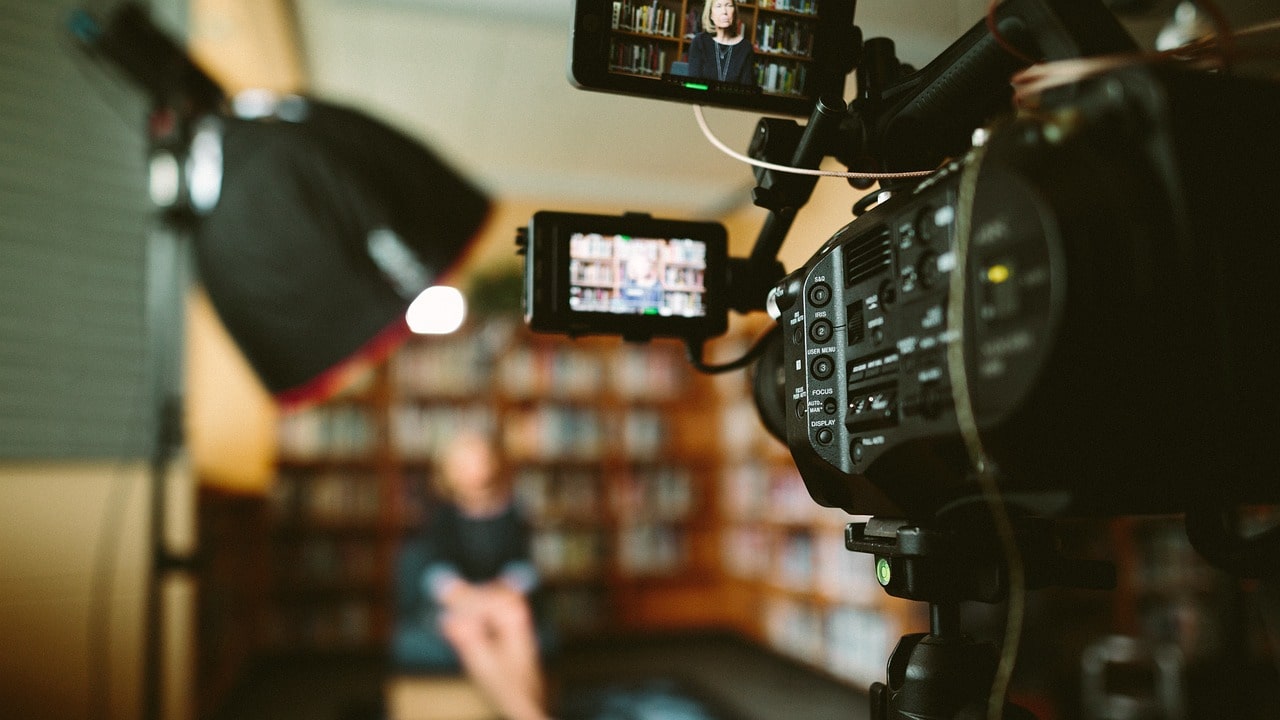Learn how to transform your home space into a professional video studio with smart lighting, sound control, and set design tips for content creators.
The following is a guest post from my bloggy friend Indiana Lee. Interested in having a guest post on my website? Click here for my guest post submission form.
From Spare Room to Studio: Transform Any Space into a Professional Video Studio
Creating your own video content at home is both convenient and lucrative. The average video content creator earns around $80,000 per annum — around $18,000 more than the national average salary, according to Salary.com.
Designing a professional home studio can significantly improve the quality of your production and help you produce a higher volume of paid content for clients. This is key if you’re thinking about going freelance or want to step up your game for your own channels.
Creating a home studio needn’t break the bank, either. In fact, a few simple alterations to your existing workspace may be all you need to take your content creation abilities to the next level. By investing in your home studio, you can use videos to increase brand exposure and create content that connects with audiences around the globe.
Light
Managing the light that enters your workspace is crucial if you want to make it in the video content creation world. Audiences will spot huge differences in lighting between shots and may find that direct sunlight causes blowout lighting. You’ll need to ensure that you have enough light entering the space on grey days, meaning natural light may not always be the best option.
Get the ball rolling by using black-out blinds to cut out as much light as possible. This gives you a stable environment to shoot in and will help you estimate how much you need to spend on lighting. Black-out blinds can be useful when editing your video, too, as cutting down natural light will reduce the risk of headaches and help you properly assess the color balance that you’re seeing on screen.
Next, set a budget for your lighting setup based on the type of content you’re shooting. For example, if you’re shooting make-up tutorials, you can probably get away with ring lights that are cost-effective and designed to fit around your phone. If, on the other hand, you plan on shooting cinematic scenes in your studio, you’ll need to upgrade to softboxes and LED lighting rigs. This is more expensive, but will significantly enhance the quality of your production.
Lighting also plays a key role in shaping the overall atmosphere of your workspace, with certain setups improving not only the look of your content but also your ability to stay focused and creative. By using adjustable lighting or introducing warm tones, you can create an environment that feels both functional and inspiring.
Moreover, it’s worth noting that you can use lighting from around the home if you’re searching for a certain “look” when filming. For example, if you wanted to shoot a scene with warm lighting, you may want to rummage around your antique collection for a banker’s lamp that emits warmer tones than what you can achieve with your lightboxes.
Sound
Creating a sound-proof studio might sound like overkill at first, but investing in sound-dampening is a great way to boost your production value. Finding ways to cut out background noise will reduce the amount of takes you to have to shoot, as you won’t be interrupted by noisy neighbors or planes flying overhead.
Soundproofing your space is particularly important if you plan on shooting interviews or recording your own voice. You don’t want to start shooting an interview just to be interrupted by a lawn mower or a knock at the door. Instead, invest in simple solutions like:
- Sealing window frames and applying acoustic caulk to seal walls
- Pick up some window inserts to insulate against sound entering through window panes
- Noise-reducing curtains and blinds
- Soft furnishing like heavy pillows and throws that act as a sound dampener in your studio
Noise-dampening items like rugs can help you create an aesthetic that suits your content creation style. This is particularly important if you plan on shooting the bulk of your content inside or are starting a live-streaming enterprise. By controlling your sound with aesthetic items, you can create a welcoming space that audiences grow to know and love.
Designing a Set
Your set is your stage. It’s where your ideas come to life, and your audience gets a glimpse of your world. The good news? You don’t need a Hollywood budget to create something memorable. Start by picking a spot that feels right for you. Maybe it’s the cozy corner of your living room, or perhaps the spare room that’s been collecting dust and mismatched furniture.
Here’s how to transform it into your dream set:
- Map It Out: Before you start moving furniture like you’re auditioning for HGTV, grab some tape and mark out your space. Think about where your camera, lights, and backdrop will go. Leave room to breathe—you don’t want to feel like you’re filming in a closet (unless that’s your aesthetic, in which case, lean in!).
- Backdrops That Pop: Your backdrop is the visual handshake with your audience, so make it count. A plain white wall is fine, but why not add a splash of personality? Try a roll of peel-and-stick wallpaper, a textured curtain, or a bookshelf stacked with props that hint at your interests (bonus points for fake plants that never die).
- Props That Speak: Props can elevate your set and tell a story. Shooting tech tutorials? Maybe a sleek laptop and some gadgets make the cut. Cooking content? Lay out a cutting board and vibrant ingredients. Think of your set as a reflection of your niche, but keep it tidy—no one needs to see your coffee cup graveyard.
- Budget-Friendly Touches: Designing a set doesn’t have to be expensive. Small updates, like thrifted items or upcycled furniture, can help you create a stylish and unique space — and this can help you keep up with current trends without harming your wallet. Trends often resurface, and shopping second-hand or during sales is a smart way to keep costs low without sacrificing quality.
- Comfort Is Key: If you’re going to be spending hours filming, your setup should feel as good as it looks. Pick a chair that doesn’t squeak (because, yes, the mic will pick it up) and lighting that doesn’t fry your eyeballs. Small comforts, like a rug underfoot or a cushion for back support, make a big difference.
Most importantly, have fun with it. Your set doesn’t have to be perfect from the start. Experiment with different layouts, lighting, and décor until it feels like home—because, well, it is.
Conclusion
Designing a home video studio that serves your needs is crucial if you want to take your video content creation to the next level. Simple changes, like buying black-out blinds and ring lights, can instantly elevate the quality of your content and improve your productivity while working from home. If you find working from a spare room isn’t quite working, consider converting an ancillary space like a garage into a home studio.






